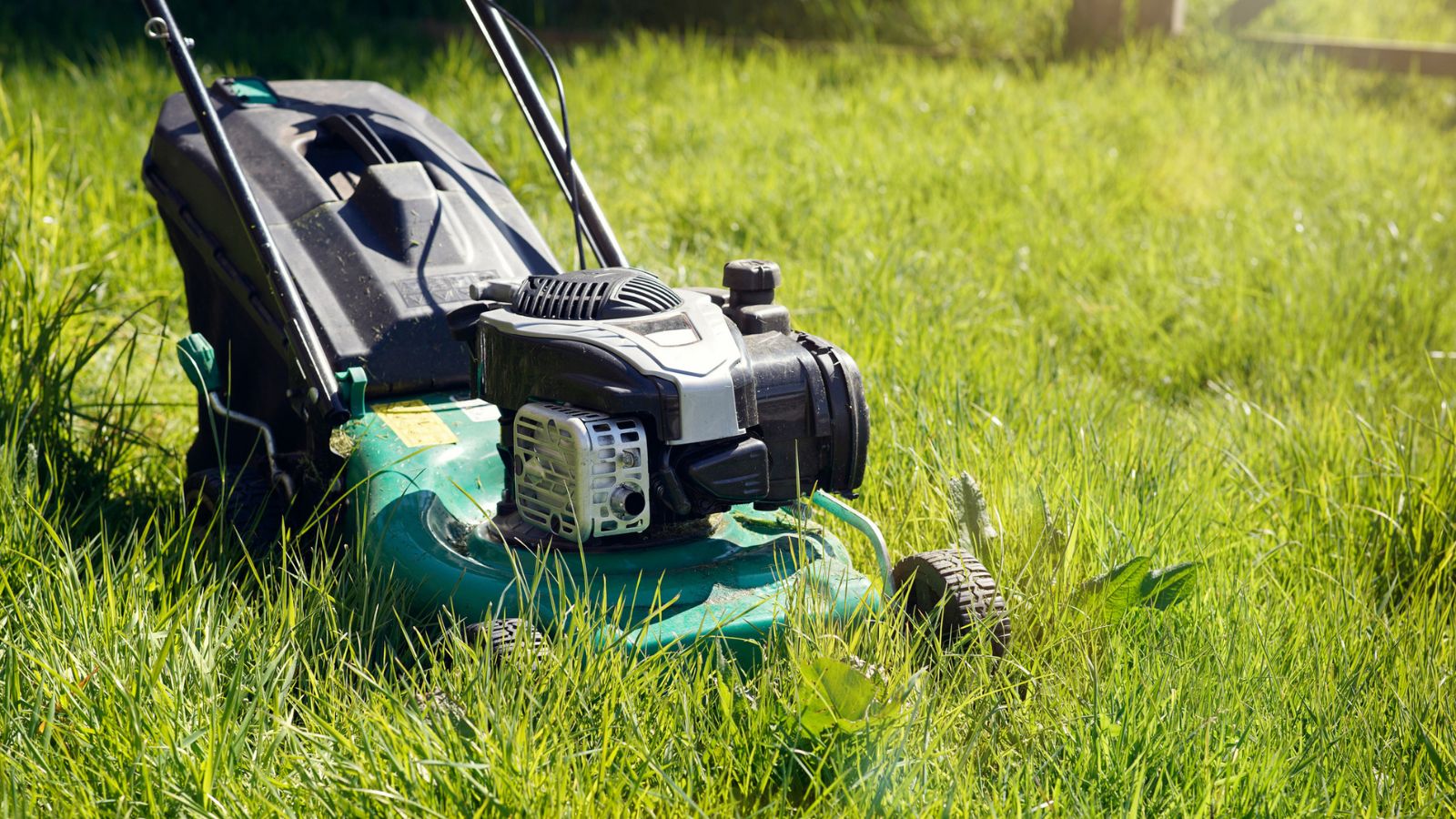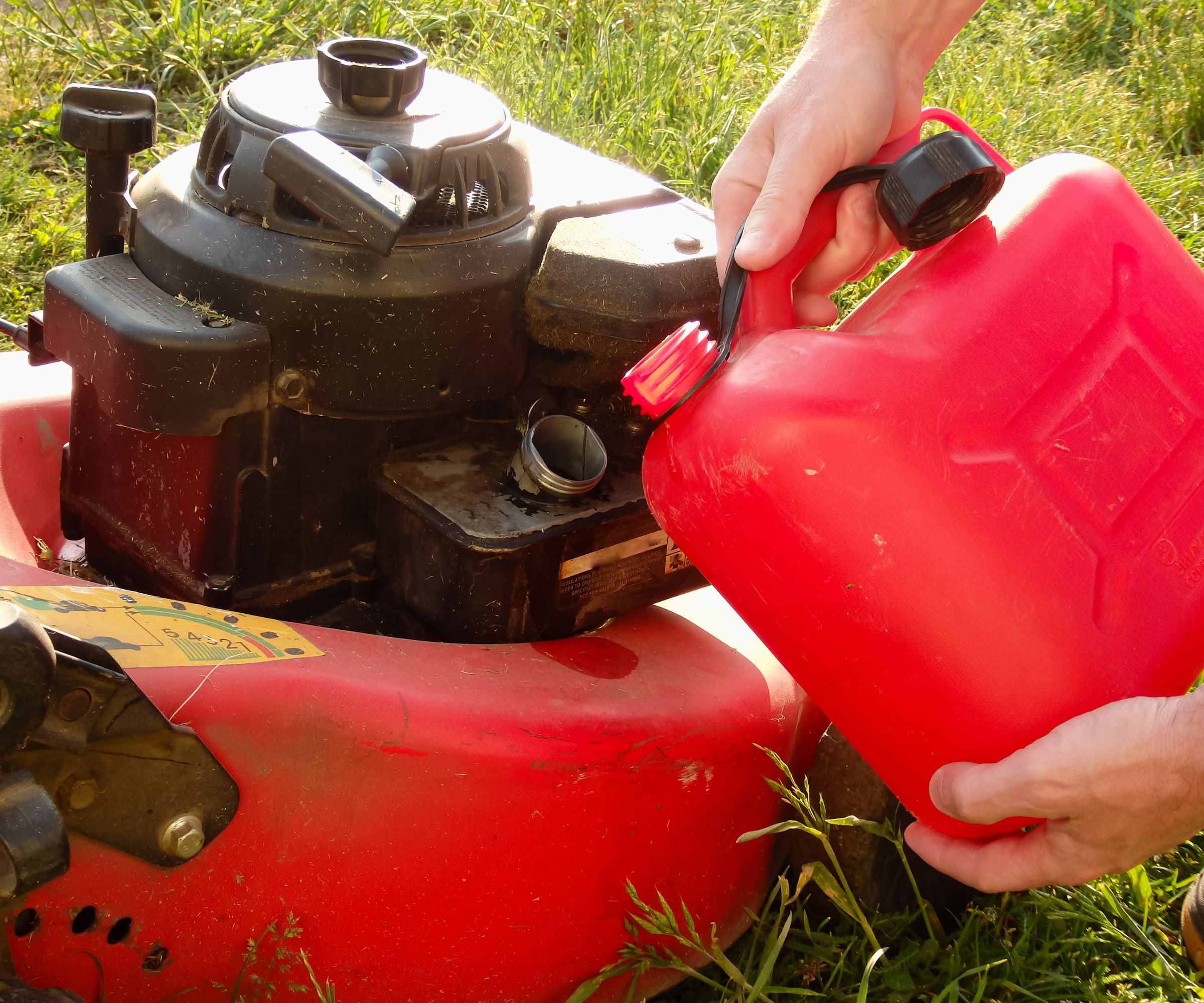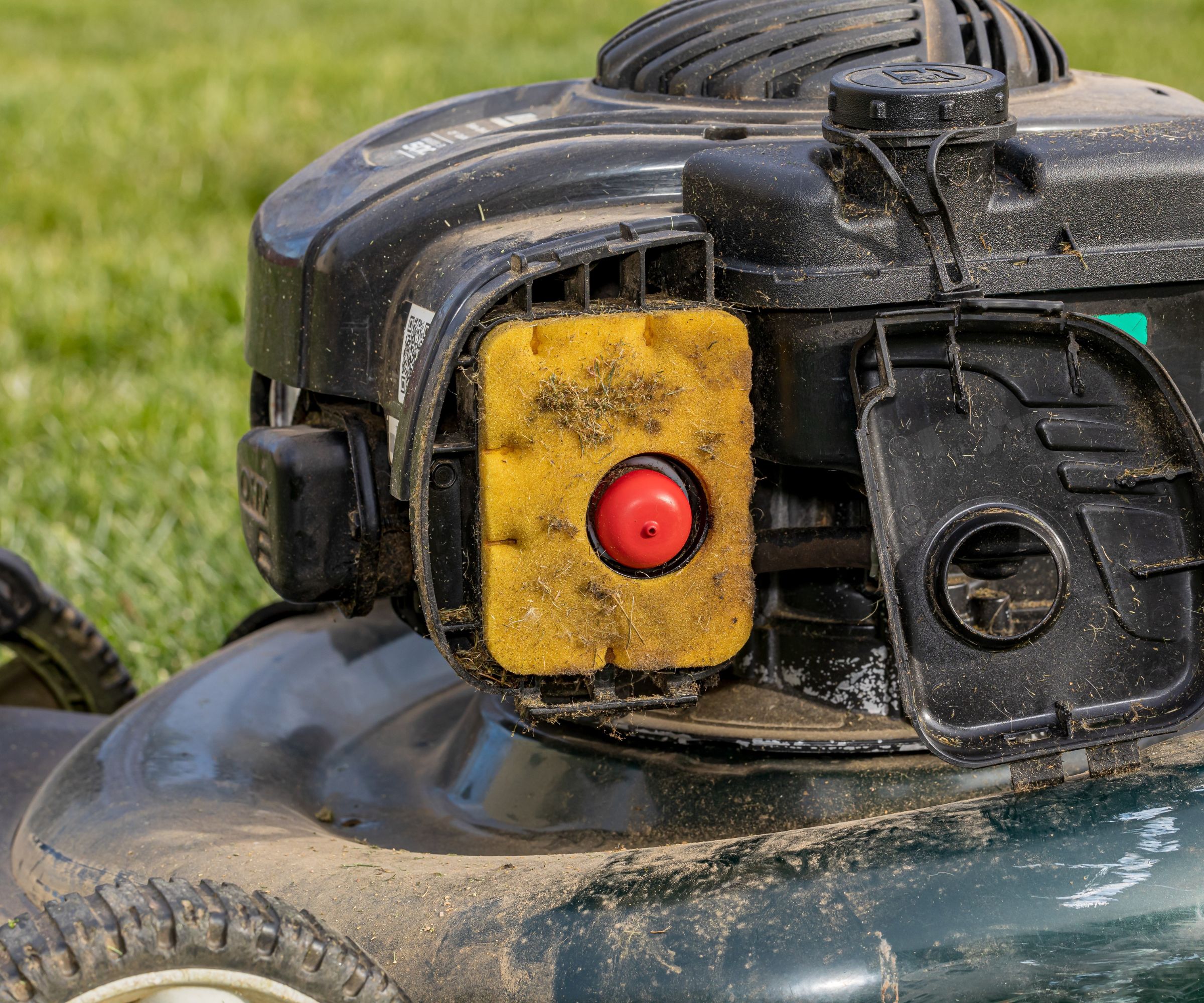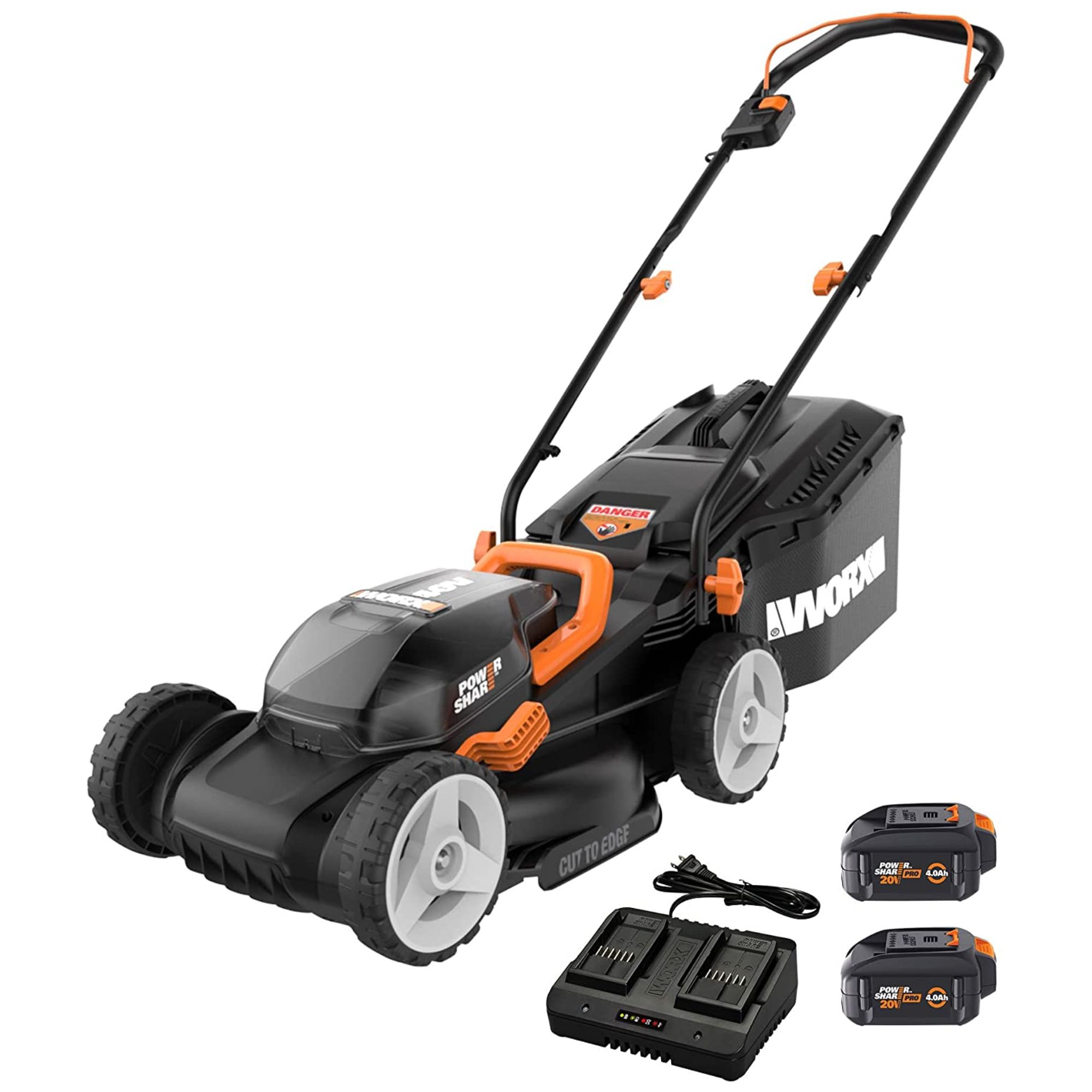Why won't my lawnmower start? 3 easy fixes from lawn care experts
Few things are as frustrating as a lawn mower that won't start – here's how to fix it


You get your first day of clear spring sunshine, see the thick undergrowth where last summer's immaculate lawn used to live, and decide to mow your grass back to its best. You wheel your mower out of storage, switch it on, and nothing happens.
Few things are as frustrating as a mower that won't start, especially as we head into the spring and summer hosting seasons and you prepare your yard for family gatherings. There are several reasons why your mower won't start, but thankfully, they're all relatively easy to fix.
I'm a lawnmower expert; I've tried and tested dozens of the best lawnmowers over the years, so I know exactly why your mower isn't turning over. I have also spoken to a collection of lawn care experts to provide further tips and tricks to get your mower running like new.
1. Check your fuel

First up, an obvious mistake, but one many by many of us – a lack of fuel. Sometimes, when you break your mower out of winter storage, you go to switch it on but forget that it isn't filled with fuel. A little annoying, sure, but an easy mistake to fix.
A trickier issue is that your gas may have gone stale. According to lawncare expert Bryan Clayton, 'Stale gas is the enemy of a smooth-starting mower'. That's because untreated gas only lasts about three months. When you pack up your mower for the winter, it can be tempting to leave it full of gas so you're ready to go as soon as we hit spring. However, the combustible vapors in the fuel will have evaporated, so your mower won't run. Bryan says to 'use a fuel stabilizer or run your mower dry before putting it away'.
In this case, remove the spark plug and siphon the gas from the tank. Let it dry and then replace it with new fuel. To save a little money, you could mix the old fuel with new fuel in a 3:1 ratio, which should start the mower, but it can be frustrating if you get the ratios wrong and the mower might not start again, so I strongly recommend starting from scratch.
If you have an electric mower, like this best-selling electric lawn mower from Walmart, check the cable for damage. If damaged, it can be easily replaced with a new one. If you have a cordless mower, the batteries may not have charged properly. You shouldn't mow in the cold anyway, but if the temperature is too low you might find that lithium batteries won't cooperate. If you've had a cordless mower for several years, it might be time to replace the batteries, as they lose capacity over time.
Design expertise in your inbox – from inspiring decorating ideas and beautiful celebrity homes to practical gardening advice and shopping round-ups.
2. Check the air filter

Next, check your air filter. Mowing is dirty work and kicks up a lot of grass and soil, and the air filter keeps this detritus from entering your mower's engine.
However, you must keep this filter clean to ensure your mower is working at its best. Unscrew or unsnap the cover and, if you have one, clean the foam filter by rinsing it in a bucket of soapy water, then leave it dry. Then, oil it with a tiny amount of small engine oil like this from Amazon. As the oil sets in, wipe down the rest of the filter with a dry cloth, then replace the foam filter and reattach the covering.
The process is simpler but costlier if you have a paper air filter as you will need to replace the air filter with a new one. Make sure the filter is compatible with your mower.
If you have a corded or cordless mower, you can skip this step, because they don't have air filters.
3. Check the spark plug

Once you've checked your gas and air filter, the next likely culprit is your spark plug. Turn off the mower and clean the area around the spark plug, so no dirt enters the cylinder after you remove it. You can then remove the spark plug with a spark plug wrench like this from Amazon, though any 3/8" socket wrench will do, and then remove it by unscrewing it by hand.
Once you've removed it, you can tell if it's fouled. If it's fouled, the top of the plug will be blackened with oil. You can clean this by soaking it in rubbing alcohol and cleaning it with a wire brush, though a knife can get the worst of it off.
If all this hasn't worked, you should replace the spark plug. Ensure it's compatible with your mower, but it won't cost much. For example, this replacement spark plug at Walmart is only $4.
How to prevent lawn mower problems
The best way to prevent lawn mower problems is through regular maintenance. Bryan Clayton told me that 'there’s no magic trick, just good old-fashioned elbow grease and a bit of common sense'. He recommends that you 'change the oil, clean or replace the air filter, and check the spark plug at the start of every season', and that you 'always keep an eye on the fuel'.
Lawncare expert Taylor Olberding also recommends more in-depth maintenance. He says your lawn mower care checklist should include 'cleaning, sharpening blades, checking fuel and oil levels, and storing properly'.
Shop lawn mowers

Whenever someone asks for a lawnmower recommendation, this is my usual choice. It cuts surprisingly close and it's great at mowing along edges. The plastic body makes it easy to steer and it's surprisingly good value. As a cordless, it owon't have any issues with spark plugs, air filters, or stale gas. So while It can't stand up to a top-line steel-deck mower, it's more than up to the task.

My go-to pick for a gas mower is this classic Honda. It's not fancy, but it's good value and does a great job every time. It's reliable and robust, and the self-propel mechanism makes mowing a breeze. However, you need to act fast, because Honda is discontinuing their gas mowers.

This EGO mower is the best cordless I've ever used. It's self-propelled, easy to use, and glides across the lawn. It's so high tech that it even has headlights for mowing under hedges, but it's pretty expensive.
FAQs
When should I replace my lawnmower?
If you're still having issues with your lawn mower after all of these checks, your mower may be too old and in need of replacement. Lawncare expert Taylor Olberding says, 'you should consider replacing your lawnmower when repairs become too frequent, performance declines significantly, or safety features are compromised'.
If your mower is rusted, broken, or simply not as good as it used to be despite maintenance and sharpening, you need a new mower.
For more tips on looking after your lawn mower, we explore how to sharpen lawn mower blades and how to winterize a lawn mower in our dedicated features.

As a gardens and lifestyle contributor, Alex makes sure readers find the right information to help them make the best purchase. Alex got his start in reviewing at the iconic Good Housekeeping Institute, testing a wide range of household products and appliances. He then moved to BBC Gardeners’ World Magazine, assessing gardening tools, machinery, and wildlife products.